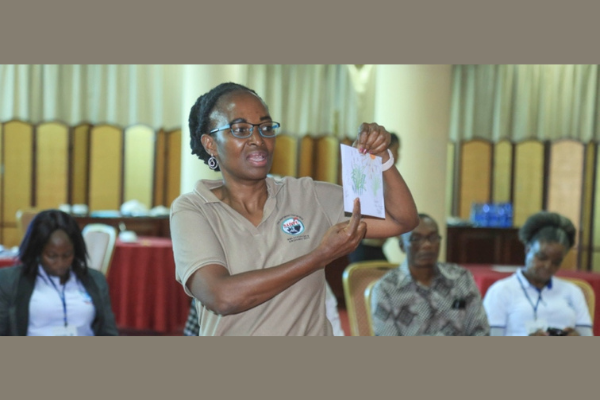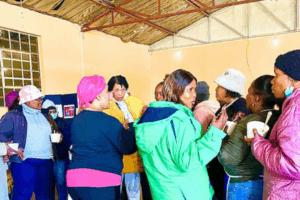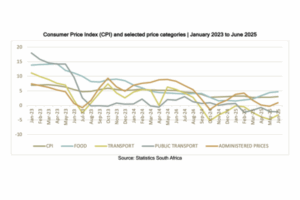Gender-based violence is a global problem, and our schools are no exception. When violence happens in schools it’s called School-Related Gender-Based Violence (SRGBV).
I started working on the issue after I attended an Education International (EI) SRGBV workshop called “Hearing Our Stories 1”, which was organised by Gender at Work in Johannesburg, South Africa. Provincial gender and education conveners (union leaders) and one additional teacher from each province attended the meeting with three union staff in our research department, including myself, as observers. The facilitator explained that the meeting was an opportunity for the union to hear its own stories of SRGBV.
We reflected on the atrocities that we’d shared and were shocked that violence in schools is rife yet not much is done to end the vice. In South Africa, violence is perpetuated by the various members of the school community, for example, school principals suffered violence from learners; women teachers by school teenage boys; young girls by male teachers; and learners by female teachers. We talked about the impact that SRGBV has on the teaching and learning environment.
The participants were asked to sit in their provincial delegation groups and identify potential pilot schools to implement SRGBV change programmes. Each group described the types of problems affecting the school and justified why it qualified for the pilot. The role of the research team was to listen to proceedings and to come up with research questions that would help guide the implementation.
I took particular interest in the development of the survey questionnaire and shaping the questions. At the back of my mind was the question of how this all starts. Surely a teacher or learner doesn’t just wake up and decide to violate another learner or teacher?
Also, I knew that it’d not be easy for leaders to think SRGBV was a big issue in their areas because the incidences aren’t usually reported until an incident happened and gave the violence a face. I wanted the questionnaire to identify the forms of SRGBV which occur in schools as well as where they occurred so that the teachers who’d complete the survey could see it for themselves. Additionally, the survey asked about the existence or non-existence of policies that may protect or promote SRGBV in the school.
We agreed to pilot the survey in one school and I met with the regional leadership and change team members to begin work. In attendance from the union were the educational convener, the gender convener, the regional chairperson, deputy secretary and a few comrades. Also present were four teachers (three women and one man) who were change team members from the school where the pilot would take place. There were now 10 educators, including the leaders in the room.
After a brief introduction by the regional chairperson about the new programme on SRGBV, I explained that we needed to understand the school context and establish the need for the programme. We needed to get the teachers to buy-in into the programme.
But, we needed to first establish the following: “What forms of SRGBV if any, occur at the school? What sparks and/or fuels them? Who are the perpetrators? What are the enabling factors and are they structural or systemic? What organisations exist in the community that we can co-opt to be part of the solution for our school’s change team to help address these issues? What policies exist to promote a culture that is pro-safety in the school that can be implemented to eradicate SRGBV? What policies need to be developed? Are there any structural changes that need to be recommended to the school governing body?
I explained that the questionnaire would help to establish whether SRGBV was an issue in their region, but I needed their input to determine whether the questions helped to mirror the situation at their respective schools, as well as how to improve the questionnaire. I asked them to write the things that came to their minds first. One of the common things that emerged after they completed the questionnaire was the realisation that they were all perpetrators of SRGBV! They gave examples of the actions that made them culprits, for example, name-calling. “Corporal punishment is banned in South Africa and so we resorted to calling learners names such as yewena nhlokenkulu (hey you big head) or “ubhala ngathi ubhala ngelunyawo” (your handwriting is like you’re using your foot),” said the teachers. They acknowledged that name-calling is verbal abuse, which makes learners angry. One teacher commented, thus: “Teachers also make sexual comments about the way some learners dress.” The convener took the questionnaire to the teaching staff in the pilot school. At the end of the survey, 38 completed questionnaires were analysed and the following issues identified:
- Bullying among learners
- Learners using dangerous weapons like knives in school fights
- Lack of security at the gates, which means anyone can come and go as they please
- Absence of a school safety policy and no monitoring or checking of what learners carry into the school.
When we went to meet the school principal, he expressed appreciation of our efforts. We also had a meeting with the school governing body, school management team and regional and branch leadership of SADTU, and later with the school staff. During both meetings, the principal introduced us, the SRGBV programme and the survey results. The school governing body pledged their commitment to the programme.
Teachers cited personal problems as the main cause of their impatience with learners, as well as failure to tolerate mistakes. They said they needed de-briefing sessions on how to deal with emotional stress, grief and general wellness issues. They acknowledged that lack of discipline from learners leaves them helpless, and thus re-affirmed the need for school policies that will be implemented.
The school decided to form a change team to come up with a strategy and to run a workshop for the staff. We left the school with a sense of hope and some achievement – the school seemed prepared to tackle this issue head-on to promote good learning and teaching environment.
For us as the change team, we realised just how difficult the SRGBV issue is. When we met in the “Hearing our Stories 2” workshop led by Education International and Gender at Work, we were shocked to hear from a woman provincial change team member that a male teacher who’d attended a previous workshop as a change team member had been suspended because he was implicated as a perpetrator of SRGBV. I remember interacting with the teacher during the workshop. He had seemed a respectable man – tall, formally dressed, quietly participating in workshop activities.
We heard that he’d raped a primary school girl who was now pregnant. I was so angry. How could a teacher who looked like such a gentleman act that way? Had he already done this when he participated in the SRGBV meeting? Someone that we saw as part of the solution was part of the problem.
The following cases are some examples of the forms of SRGBV that the union was asked to account for:







